While Hackaday is about as far from a fashion blog as you can possibly get, we have to admit we’re absolutely loving the [bithead942] Winter 2018 Collection. His wife and daughter recently got to model his latest must have design: wearable Star Wars speeder bikes; and judging by the video after the break they were certainly some of the best dressed at the Thanksgiving parade.
 [bithead942] started the build by taking careful measurements of a vintage speeder bike model kit his wife had, which allowed to accurately recreate the iconic look of the vehicles as they were seen in Return of the Jedi . But to do them justice, the final “bikes” would need to be around three meters (ten feet) long, which immediately posed a problem. What kind of material could support itself over that length while still being light enough to wear for extended periods of time?
[bithead942] started the build by taking careful measurements of a vintage speeder bike model kit his wife had, which allowed to accurately recreate the iconic look of the vehicles as they were seen in Return of the Jedi . But to do them justice, the final “bikes” would need to be around three meters (ten feet) long, which immediately posed a problem. What kind of material could support itself over that length while still being light enough to wear for extended periods of time?
The answer came, as it often does, from the local hardware store. He found that a combination of Schedule 80 and 40 PVC pipe was a perfect material: strong enough to support the desired dimensions without bending, light enough that the final bike wouldn’t be uncomfortable to wear, easy to bend with heat, and perhaps best of all, cheap and readily available. The PVC frame was then covered with chicken wire and thin flexible foam to give it a filled out look without weighing them down.
Even though he had a strict weight limit on the build, [bithead942] couldn’t help but add in some electronics to complete the effect. The LED festooned control panel allows the ladies to trigger different sound effects from the movie stored on a Adafruit Mini FX Sound Board, which is connected to a 20W Class D amplifier and a pair of 400 watt car stereo speakers. He says the resulting playback was loud enough to hear outside during the parade, and only added a few pounds to the overall build.
These may be the bikes you’re looking for, but they’re definitely not the first we’ve featured on Hackakday. Meanwhile you’d be wise not to underestimate the lowly PVC pipe when designing your next project. From a hacked together drill press for your Dremel to a planetarium for you and your closest dozen or so friends, there’s little you can’t build with this plentiful material.
Continue reading “Wearable Speeder Bikes Are Ready For A Night Out”



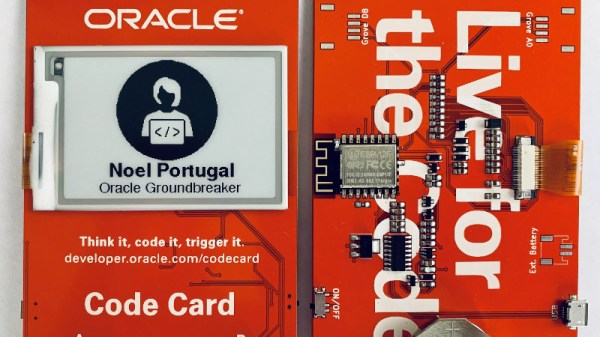
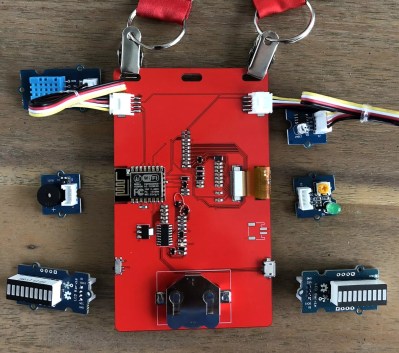
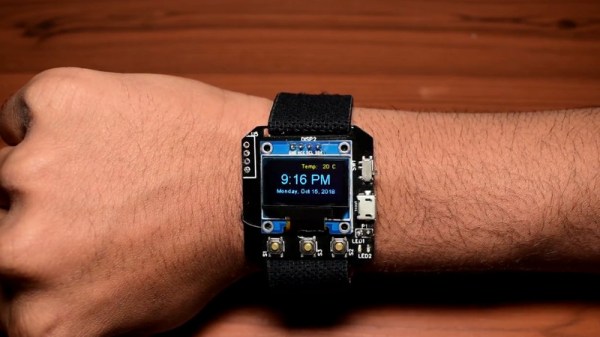
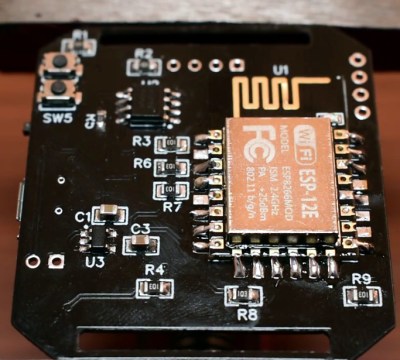

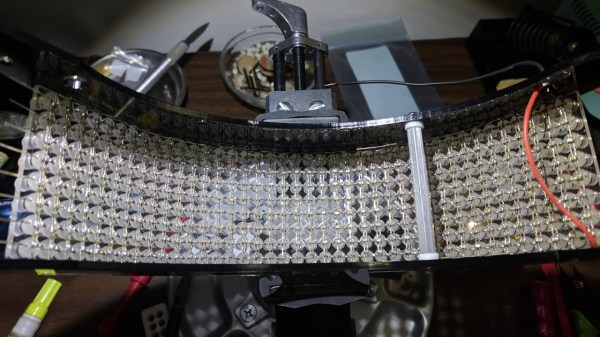
 The iconic robot helmets of Daft Punk feature prominently as challenging DIY hardware projects in their own right, and the results never disappoint. But [Nathaniel Stepp]’s
The iconic robot helmets of Daft Punk feature prominently as challenging DIY hardware projects in their own right, and the results never disappoint. But [Nathaniel Stepp]’s  After the whole array was assembled and working, the back of each LED appears to have then been carefully coated in what looks like Plasti-Dip in order to block light, probably to minimize the blinding of the wearer. A small amount of space between each LED allows the eyeballs inside the helmet to see past the light show in the visor.
After the whole array was assembled and working, the back of each LED appears to have then been carefully coated in what looks like Plasti-Dip in order to block light, probably to minimize the blinding of the wearer. A small amount of space between each LED allows the eyeballs inside the helmet to see past the light show in the visor.










